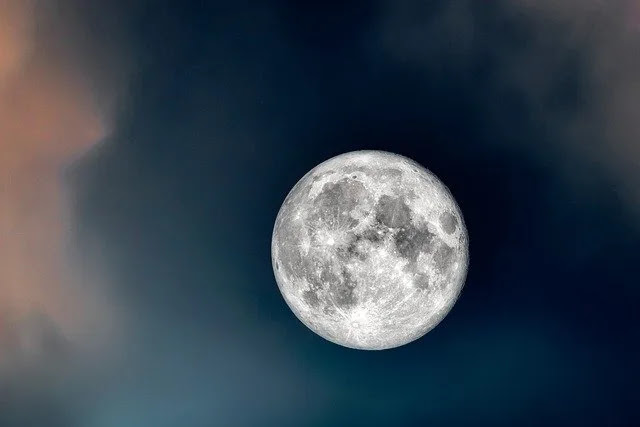The Moon has fascinated humanity for centuries. As Earth’s closest celestial neighbor, it has captivated our imaginations and inspired countless myths, scientific discoveries, and space missions. In this article, we will explore ten amazing facts about the Moon, shedding light on its origin, composition, effects on Earth, and its role in shaping human exploration and understanding of the cosmos.
Lunar Origins and Formation:
The prevailing theory regarding the Moon’s formation suggests that it emerged around 4.5 billion years ago when a Mars-sized object collided with a young Earth. The collision ejected debris into space, which eventually coalesced to form the Moon. This event not only influenced the Moon’s size but also led to its peculiar composition.
Lunar Geology:
Contrary to popular belief, the Moon is not a solid, unchanging sphere. It features a diverse range of geological formations, including vast plains called “maria,” which were formed by ancient volcanic activity. The Moon also exhibits craters, mountain ranges, and deep canyons, each offering valuable insights into the Moon’s past.
Synchronous Rotation:
One fascinating aspect of the Moon is its synchronous rotation, which means it takes the same amount of time to complete one rotation on its axis as it does to orbit around the Earth. Consequently, we always see the same side of the Moon from Earth, a phenomenon known as “tidal locking.”
Moonquakes:
Although the Moon appears serene, it experiences moonquakes caused by tidal forces exerted by the Earth. These quakes are generally mild but can occasionally reach magnitudes of up to 5.5 on the Richter scale. Understanding these quakes helps scientists gain insights into the Moon’s internal structure and geological activity.
Lunar Atmosphere:
While the Moon is often depicted as a barren, airless world, it does have an incredibly thin atmosphere known as an exosphere. Composed mainly of helium, neon, and small amounts of other gases, this tenuous atmosphere is unable to retain gases due to the Moon’s weak gravity.
Moon’s Influence on Earth:
The Moon’s gravitational pull plays a crucial role in shaping our planet. Its gravitational forces generate tides, which have a significant impact on coastal ecosystems and contribute to the mixing of nutrients in the oceans. Additionally, the Moon’s presence stabilizes Earth’s axial tilt, resulting in relatively stable seasons.
Moon-Earth Interactions:
The Moon’s proximity to Earth has not only influenced our planet but also enabled scientific progress. Through the study of moon rocks brought back by the Apollo missions, scientists gained a deeper understanding of the Moon’s geology and used it as a window into the early history of the solar system.
Lunar Regolith:
The Moon’s surface is covered by a layer of loose, fragmented material called regolith. Composed of fine dust, small rocks, and boulders, regolith poses a unique challenge for human exploration due to its abrasive nature. The study of regolith provides valuable insights into lunar geology and can help develop technologies for future lunar missions.
Moon Landing Missions:
On July 20, 1969, the Apollo 11 mission made history by landing astronauts Neil Armstrong and Buzz Aldrin on the Moon’s surface. This monumental achievement marked the first time humans set foot on another celestial body and opened the door to further lunar exploration.
Future Lunar Exploration:
The Moon continues to be a target for future space exploration. Governments and private entities are actively working towards establishing a sustainable human presence on the Moon through initiatives such as NASA’s Artemis program. These missions aim to expand our scientific knowledge, develop technologies, and potentially serve as a stepping stone for human exploration of Mars and beyond.
The future of lunar exploration involves establishing lunar bases, conducting scientific research, and utilizing the Moon’s resources. One key resource of interest is water ice, which has been detected in permanently shadowed regions of the Moon’s poles. Water is essential for life support, fuel production, and could potentially enable long-duration missions to other parts of the solar system.
Apart from scientific and resource exploration, the Moon also holds potential for astronomical observations. The absence of an atmosphere and the Moon’s stable surface provide an ideal platform for telescopes, enabling astronomers to study distant objects in space without atmospheric distortion.
In recent years, there have been plans to send robotic missions to the Moon for further exploration. These missions aim to investigate unexplored regions, study lunar volcanism, and enhance our understanding of the Moon’s geological history.
The Moon has not only played a significant role in scientific exploration but has also inspired human creativity and culture. It has been a subject of artistic expression, literature, and countless myths and legends across different civilizations. The Moon’s mystique and its influence on the human psyche continue to inspire wonder and curiosity.
In Conclusion:
The Moon is a celestial body that has captivated humanity for centuries. Its origins, geological features, and effects on Earth make it an object of scientific fascination. The Moon landing missions and ongoing exploration efforts have pushed the boundaries of human achievement and our understanding of the universe. As we look to the future, the Moon holds immense potential for further scientific discoveries, resource utilization, and as a stepping stone for human exploration of the cosmos. The Moon will continue to be an object of awe and inspiration, reminding us of the vastness and beauty of our universe.


